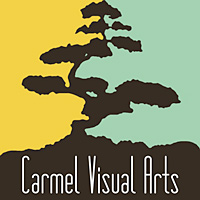Materials List
Easel
- Please bring a portable pochade-box style easel or French Easel. If you are traveling by air or if do not have an easel, we do have a few that can be loaned to you at the studio. Please let Rich know to set one aside for you.
Paints
This is what will probably be on your instructor’s palette, give or take…
- Flake White (Titanium is OK)
- Genuine Naples Yellow Light (Vasari)
- Cadmium Yellow Light
- Cadmium Yellow Deep
- Yellow Ochre
- Transparent Earth Red
- Terra Rosa or Venetian Red
- Cadmium Red Light
- Alizarin Crimson
- Quinacridone Violet (Richeson)
- Ultramarine Blue
- Cobalt Blue
- Prussian Blue
- Thalo blue or thalo green
- Asphaltum (Gamblin)
- Raw Umber (Old Holland)
- Chromatic Black
Brushes
- If you’re in need of a good set of brushes, I suggest the Rosemary Brushes “NGLOVE” set, available on the Rosemary & Co. website.
- I use hog bristle brushes from Trekell, flats or long filberts, in a range of sizes, as well as Rosemary’s long rounded ivory flats, ivory filberts, and ivory egberts,
Painting Knife
- A knife can be used for mixing and for applying paint. A two- or three-inch long knife with a long, graceful shape is the most versatile.
Solvent & Medium
- A solvent (turpentine, traditionally) dissolves and thins wet paint. Use odorless solvents only (Gamsol). You’ll also need a small container or palette cup to hold solvent. A stainless brush washer with a basket and a lid that clamps on is good for cleaning brushes during and after painting.
- A medium is used to change the consistency of the paint. I use Flemish Maroger and Venetian Wax Medium from Old Masters Maroger (oldmastersmaroger.com).
Palette
- Something to mix your paints on. Please don’t use a white palette; it makes judging values very difficult. A wooden palette is fine; treated repeatedly with linseed oil it makes an ideal surface for mixing. Glass or plexiglass is also good; tape a neutral color paper to the back. If you prefer a disposable palette get the gray one from Richeson.
SUPPORTS
- A support is a surface to paint on, and a ground is the primer, usually gesso, used to coat the support to prepare it for painting. Paper is a good support if coated with shellac. Stretched canvases or canvas boards are
- Size and quantity of supports depends on the student. Sometimes you’ll want to do a sustained study and sometimes several starts. Better too many than not enough.
- Tone gessoed supports with a middle value using a little solvent and any neutral combination of paint (such as burnt umber plus ultramarine blue, or raw umber plus a little white). Then use a paper towel to remove excess and create a very thin, even tone.
Paper Towels


